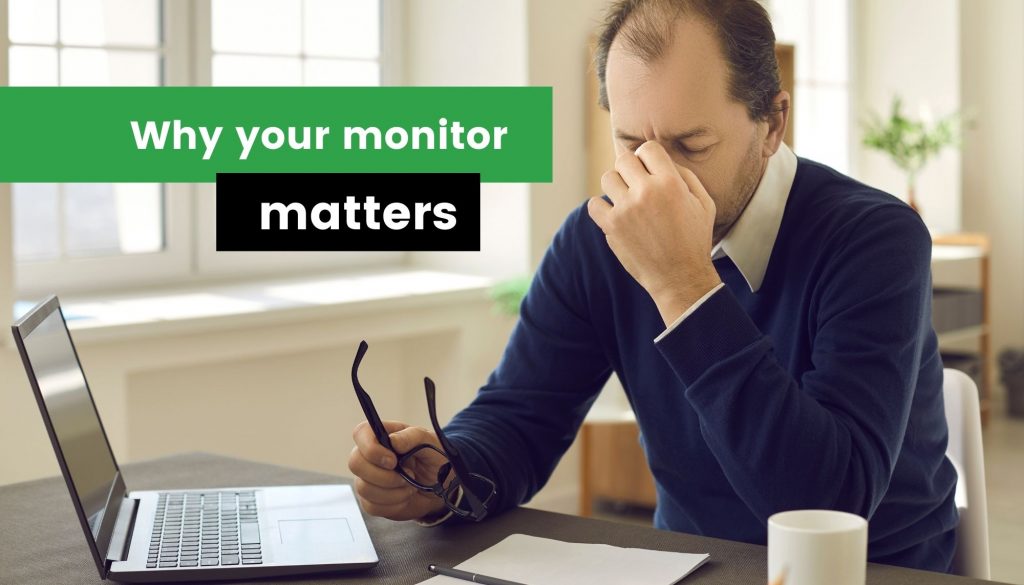
These days, with everyone working remotely, we’re spending more time than ever staring at monitors. While most of us tend to think a monitor is just a monitor, the quality of your monitor is actually quite important when it comes to protecting your eye sight.
Computer Vision Syndrome (CVS), also known as Digital Eye Strain, is a real condition that can cause headaches, eyestrain, blurred vision, dry eyes and neck and shoulder pain.
There are a variety of things that you should be doing to prevent it, including ensuring the correct positioning of your monitor and taking breaks from the screen. However, the quality and resolution of your monitor also plays a big part in preventing CVS.
Check your cable
If it has a blue ending at both ends it is a VGA cable. Switching it for a HDMI or Display Port cables are able to transfer more data, faster, which means higher resolutions and frame rates – which translates to a better picture and less eye strain,
Monitors aren’t just monitors
While there are the obvious difference in size, monitors also vary greatly in resolution. It goes without saying – the higher the resolution, the better. If you spend most of your day staring at the screen, then a better quality monitor will make a big difference. Look for one that is:
- FHD – being Full High Definition;
- QHD – Quad High Definition; or
- UHD – Ultra High Definition.
Get the positioning of your monitor right
Depending on your needs and setup, you may also benefit from a larger monitor or multiple monitors. Whatever works for you, you should position your monitor:
- roughly 50cm away (or an arms length)
- so that the top of the monitor is at about eye level (your eyes should look down slightly when looking at the middle of the screen).

